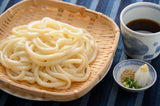what is dashi

Dashi is the basis of Japanese cuisine and the base of various Japanese cuisine, and the deliciousness of the dish is determined by the umami of this dashi.
The main ingredients for dashi are dried bonito flakes, kelp, dried shiitake mushrooms, and dried sardines.
The dashi is made by maturing these ingredients and extracting the umami from carefully selected ingredients, and the flavor and taste will change depending on how the ingredients are selected and combined.
In Japanese cuisine, dashi is used in different ways depending on the dish to bring out the original umami of the ingredients and create a delicate and profound flavor.
The quality of dashi depends on the choice of ingredients, so it is important to select good ingredients and use them correctly.
What is the sercret of dashi’s deliciousness?
The secret of dashi's deliciousness is umami.
Umami is one of the five basic tastes (sweet, sour, salty, bitter, and umami), and the main umami ingredients are glutamic acid (kelp), inosinic acid (dried bonito flakes and dried sardines), and guanylic acid (dried shiitake mushrooms).
By combining two or more umami ingredients, you can bring out a synergistic effect.
Incidentally, it is said that when glutamic acid and inosinic acid are combined in a 1:1 ratio, the umami component becomes 7 to 8 times stronger than when tasted alone.

Types of dashi and how to use them
Ichiban (the first) dashi(kelp×bonito flakes )
It has an elegant amber color with a mellow taste and aroma.
It is suitable for delicate dishes that take advantage of the elegant flavor of dashi.
For example, it is suitable for clear soup, chawanmushi (steamed egg custard),Japanese egg omelet, etc.



Niban (the second) dashi (kelp×bonito flakes )
Although the flavor is slightly weakened, this is a soup stock that takes time to extract even more umami from leftover dried bonito flakes and kelp of ichiban dashi and is suitable for dishes with a strong flavor.For example, it is suitable for miso soup, simmered dishes, and seasoned rice, etc.



Niboshi dashi (kelp×dried sardines)
It has a strong taste and aroma and it features a strong umami taste.
For example, it is suitable for simmered dishes, ramen, miso soup, and
udon-noodles, etc.



Konbu dashi (kelp)
It features an elegant and gentle taste.
The taste and aroma vary depending on the type of kelp.
For example, it is suitable for dashi soaked vegetables,hotpot,and oden, ect.



Sitake dashi (kelp×dried shiitake mushrooms)
It features rich umami with a strong sweetness.
For example, it is suitable for seasoned rice, simmered dishes,
and noodles dipping sauce.



Check the recipe using dashi by Michelin-starred Japanese chefs, here!
JAPANESE COOKING |Online Japanese culinary certificate programs
The flexible and affordable online Japanese culinary certificate program helps to expand your cooking skills and improve your career.
This online program is designed for those who want to learn the basics of Japanese cuisine and food culture.
through e-learning. It is also designed to obtain certification. Read more⋙
You can watch some of the content.
